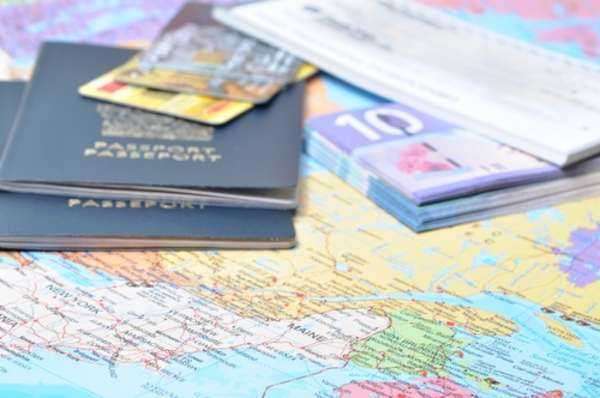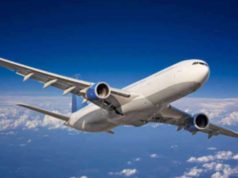
Where to Apply for a Travel Visa?
Travel has become a popular activity for individuals all around the world. People travel for various reasons including education, adventure, business, and leisure. However, before leaving for a foreign country, one must ensure that they have obtained the necessary documents required for entry into that particular country, one of which is a travel visa. A visa is an official document that provides individuals with legal entry into a foreign country. In this article, we will discuss where to apply for a travel visa, with updated information from government resources.
1. What is a Travel Visa?
A travel visa is a document that grants an individual legal permission to enter a foreign country. It is usually a stamp or sticker that is placed in a passport. The visa is issued by the government of the country being visited and is granted based on the purpose of the visit, length of stay, and the individual’s nationality.
2. Types of Travel Visas
The type of visa required varies depending on the purpose of the visit and the nationality of the traveler. There are several types of visas available including:
Tourist Visa: This type of visa is required for those individuals who wish to visit a foreign country for tourism purposes, such as sightseeing, visiting friends/family, or attending cultural events.
Student Visa: A student visa is required for individuals who are planning to enroll in an educational program abroad.
Work Visa: This visa is required if the individual is planning to work in a foreign country.
Business Visa: This visa is required for individuals who are going to a foreign country for business, such as attending a conference or a meeting.
Transit Visa: A transit visa is required for individuals who are traveling through a foreign country en route to their final destination.
3. Where to Apply for a Travel Visa?
The visa application process begins by identifying where to apply for your travel visa. This can be done in one of three ways:
Embassy or Consulate: The most traditional method of applying for a visa is to visit an embassy or consulate of the country you will be visiting in your home country. Many countries have multiple embassy or consulates within a country, and you should locate the one closest to your place of residence. Scheduling an appointment at the embassy or consulate will ensure that you meet the required consular officer who will review your application and grant the visa.
Online: Some countries may allow you to apply for a visa online through their embassy website or through a third-party visa processing company. You must complete an online application form, attach the required documents and submit the application. You may also need to pay an application fee. Once the application has been submitted, a consular officer will review it and approve the visa after due process.
Visa on Arrival: Certain countries allow visa on arrival, meaning that travelers can apply for their visas upon arriving in that country. However, it is important to check if your country and purpose of travel is listed for visa on arrival status.
4. Passport and Other Documentation Requirements
Applicants must provide certain documents, and follow procedures which vary depending on the country they’re visiting. These may include a valid passport, photographs, visa application fee payment proof, hotel bookings, flight itinerary, financial records among others. After all the documents have been collected, they must be submitted to the embassy or consulate, or through the online visa application process.
5. Visa Processing Time
Visa processing times vary depending on the country being visited and may take several weeks. It is recommended to start the visa application process at least two months in advance of the planned travel date, to avoid any unnecessary stress or delay in receiving the visa.
6. Conclusion
Acquiring a travel visa may seem daunting, but with proper research and preparation, the process becomes manageable. Before applying for a visa, do research to identify the most convenient and affordable option for submitting the visa application, listing all the required documents and time frames. Emphasis should also be given to the validity, expiration date and number of entries allowed for the visa application. By following the steps listed in this article, you can make the visa application process less stressful and enjoy a smoother travel experience.
Travel visas are authorized by immigration officials for short-term business, tourist or treatment engagements. Though the name “travel visa” implies a more casual approach, there are still important thing to keep in mind when obtaining a travel visa. There are two distinctions of travel visas classified by the Department of State. Those conducting affairs related to business or study must enlist for a B-1 visa.
Those who are coming to the United States simply for the joy of travel and cultural enrichment, or alternatively for medical procedures, qualify for a B-2 visa. In addition, before even struggling to obtain a travel visa, one may be able to travel without it, especially if the country is Mexico or Canada, or they have ESTA approval and their nation is one of 35 qualifying nations under the Visa Waiver Program.
Individuals from the countries who are eligible to participate in the Visa Waiver Program can enter at United States ports of entry without the need to complete a Nonimmigrant Visa Application form. However, this does not preclude the need to show valid personal identification and to be assured that one’s passport does not need to be renewed if it was issued before a certain date. Otherwise, applicants should consult the embassy or consulate most convenient to them in their country of residence and schedule an interview to determine their candidacy.
As with the application process for most visas, a consular office abroad will be a point of contact and a means of working with the federal government for the acquisition of a travel visa. In accord with Department of State recommendations, there are a few things to prepare when considering application for a travel visa. First of all, any inquiries of visa or passport status or realizations that a new visa or passport is needed should precede a trip, as the penalties for overrunning the prescribed bounds of a travel visa could result in future denials of visas or otherwise being barred from the country.
Second of all, you should prepare to build fees and wait times into your assessment of the costs associated with processing a visa with your chosen consular office, including reciprocity fees if applicable. Thirdly, be aware of all relatively minor details that may await you at the visa interview, such as documentation of your intended stay, forms of ID, proof of available funds, and fingerprint analysis.
With terms of the travel visa outlined in the visitor’s paperwork and the supposition by the United States government that even short-term residence is a prelude to a permanent place in this country, there is an apparent contradiction. Effectually, though, while the alien coming to America must satisfy some requirements of being an immigrant, the travel visa is a non-immigrant visa on which exact travel dates must be verified. Exact forms must be taken into account for, as well. First and foremost is the Nonimmigrant Visa Application, which may be manifested in the form of the DS-156 and supplemental print forms or the complete, condensed DS-160 online application. Your confirmation of the details of the authorized trip will be recorded on your copy of the I-94 form, the Arrival/Departure Record.
For those who eschew the visa process by virtue of special status or Visa Waiver Program membership, a valid passport that employs e-Passport technology is still a necessity, as it contains the information that your completed I-94 would normally display. Lastly, for those who overstay the time limit for their visa or seek one whose function more closely applies to another class of visa, such as a work visa
Often related to a particular country of origin, there are some special considerations for potential foreign travelers to the United States. Citizens from officially recognized border countries may be the beneficiaries of some relaxed restrictions on their transit, though depending on the nature of their stay, non-immigrant visas may be necessary.
For residents of Canada and Bermuda, trips of up to 90 and 180 days, respectively, can be taken without the need for a visitor visa. As for legal Mexican residents, this may also be accomplished by the possession of a Border Crossing Card/Laser Visa, which serves the purpose of a dual status travel visa. Restrictions on a handful of countries and delays for additional administrative processing are increased for some countries.
Inhabitants of countries accused of state sponsorship of terrorism are subject to additional forms and scrutiny. Even when special considerations are not made based on nationality, those seeking medical treatment must have signed authorization from a licensed American medical practitioner and the funds to pay for all treatments and procedures.
With necessary travel visa requirements, as in special considerations for approval, country of origin and the nature of the stay can go a long way in confirming an applicant’s eligibility and completing the travel visa application process. Once more, there are general requirements for visa processing. The parameters of the visa must be closely observed, too.
In most cases, the visa will be only be valid for ninety days upon arrival. To solicit changes, Citizenship and Immigration Services should be notified prior to expiration of visa documentation. The applicant, as part of his or her interview, should likewise be prepared to possess information related to his or her travel. This includes documents that will provide evidence of the reason for their journey, proof of financial support, and a compelling reason for the applicant to return home.




















